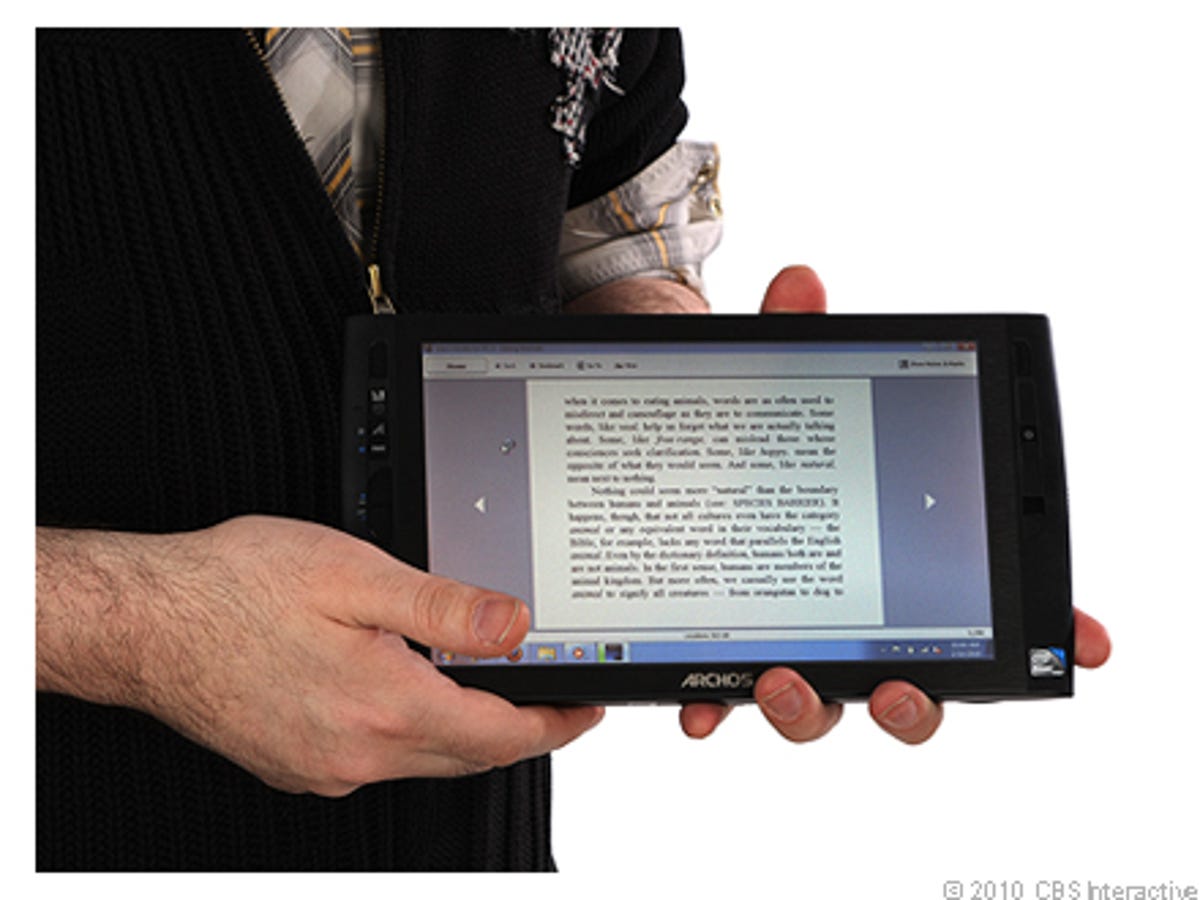

Now playing:
Watch this:
Tablets (Winter 2010)
3:37
Editors’ note: Updated January 12, 2011.
As manufacturers rush to capitalize on the attention given to the Apple iPad, there’s seems to be a new tablet announced every week. We can’t keep track of every slate thrown into the wild, but if you’re curious to know what options are out there, we’ve compiled a general overview of the tablet landscape.

Apple
iPad
There’s probably no explanation needed for this one. With a million iPads sold within the first month of its introduction, the iPad has quickly taken the lead position in the tablet category.
Pros: Elegant hardware; vibrant App Store; ideal for media playback; large selection of games; fast processor; responsive multitouch screen; long battery life; priced as low as $499.
Cons: Users must buy their software from Apple; existing Mac and Windows software isn’t supported; lacks Adobe Flash compatibility; limited hardware support.
CNET’s Apple iPad resource page | Full review: Apple iPad
Windows tablets
Historically, tablets running Microsoft’s Windows operating system made up the major share of the market. These include several subcategories, such as slates, convertible laptops, UMPCs, and MIDs. Windows-based tablets still thrive, especially in niche professional applications that demand the capabilities and broad software compatibility of Windows.
Pros: Familiar interface; broadest software and hardware compatibility; Adobe Flash support; multitasking; wide range of screen sizes, pricing, and implementations.
Cons: Windows desktop interface doesn’t always translate well to the touch screen without intermediating software or stylus input; typically longer boot times compared with mobile OS; cumbersome software installation; more prone to computer virus; typically shorter battery life.
Examples: Lenovo IdeaPad S10-3t, Archos 9 PC tablet, Asus Eee PC T91


CNET
Android tablets


Samsung
Smartphones running Google’s Android OS are some of the biggest competitors to Apple’s iPhone. Android takes an approach similar to Apple’s iOS, offering a streamlined interface based around lightweight, third-party apps.
In 2010, CNET reviewed several tablets running versions of Android up to 2.2 (aka Froyo), which essentially duplicated the Android smartphone experience onto a larger screen. Since that time, Google announced its tablet-optimized version of Android 3.0, named Honeycomb, due out in the first quarter of 2011 on Motorola’s Xoom tablet.
Pros: A large variety of apps; quick boot time; third-party manufacturers competing to provide hardware; one-touch access to Google Web search; options priced as low as $199.
Cons: Many Android features and developer specs (pre-Honeycomb) are more fitting for smartphones than tablets; legacy apps designed for phone screens don’t scale well; accessory compatibility changes from manufacturer to manufacturer; not all tablet hardware will support Android Honeycomb.
Examples: Motorola Xoom, Samsung Galaxy Tab, Dell Streak, ViewSonic ViewPad 7
E-book readers


Barnes & Noble
Dedicated e-book readers were once simple and straightforward. Generally, they used e-ink on high-contrast black-and-white displays with screen sizes of 5 to 10 inches. Most offer the ability to read e-books as well as magazines and newspapers, and the most popular ones are tied to specific content vendors (Amazon, Barnes & Noble, Sony).
New tablets (such as the iPad and Nook Color) include some or all of the functionality of a traditional e-book reader, but can be used for a much broader range of purposes, such as Web browsing, e-mail, and video playback.
That said, traditional e-readers typically include niceties such as free 3G e-book store access and the e-ink screens–which many readers find to be easier on the eyes for long reading sessions. These dedicated devices still have a place in a tablet world, especially for frugal consumers shopping in the sub-$200 price range.
Pros: E-ink screens (on many models) that are easy on the eyes; built-in 3G wireless (on some models); lower price points than most full-featured tablets; comparatively excellent battery life when weighed against full-fledged tablets.
Cons: Black-and-white screens (on e-ink models); limited touch-screen options; additional media features (audio, video, Web browsing, third-party apps) are often limited or nonexistent.
Examples: Amazon Kindle, Barnes & Noble Nook Color, Sony Reader
See CNET’s top e-book readers | See latest e-book reader reviews
Other


OpenPeak
There are a few tablets on the horizon that don’t fall neatly into any of the previous categories. But whether it’s a custom Linux-based slate like the OpenTablet, or HP’s rumored tablet based on Palm’s WebOS, they all have one thing in common: they’re untested. Compared with a Windows-based tablet or the relatively long history behind Apple’s iOS, any new kid on the block will inherently have some kinks to work out.
In conclusion, there are a number of product types and considerations to weigh when shopping for a tablet. Unlike most product categories, however, there is a clear and deservedly successful top product that stands out among tablets: the Apple iPad.
Unless you’re constrained by budget or a specific requirement that the iPad does not provide, Apple’s tablet is an easy product for us to recommend and is currently the standard all competitors are judged against. That stance may change as Android’s Honeycomb OS and other competitors begin to gain traction, but until then, Apple’s iPad has the lead.
Executive Editor John P. Falcone contributed to this story.



